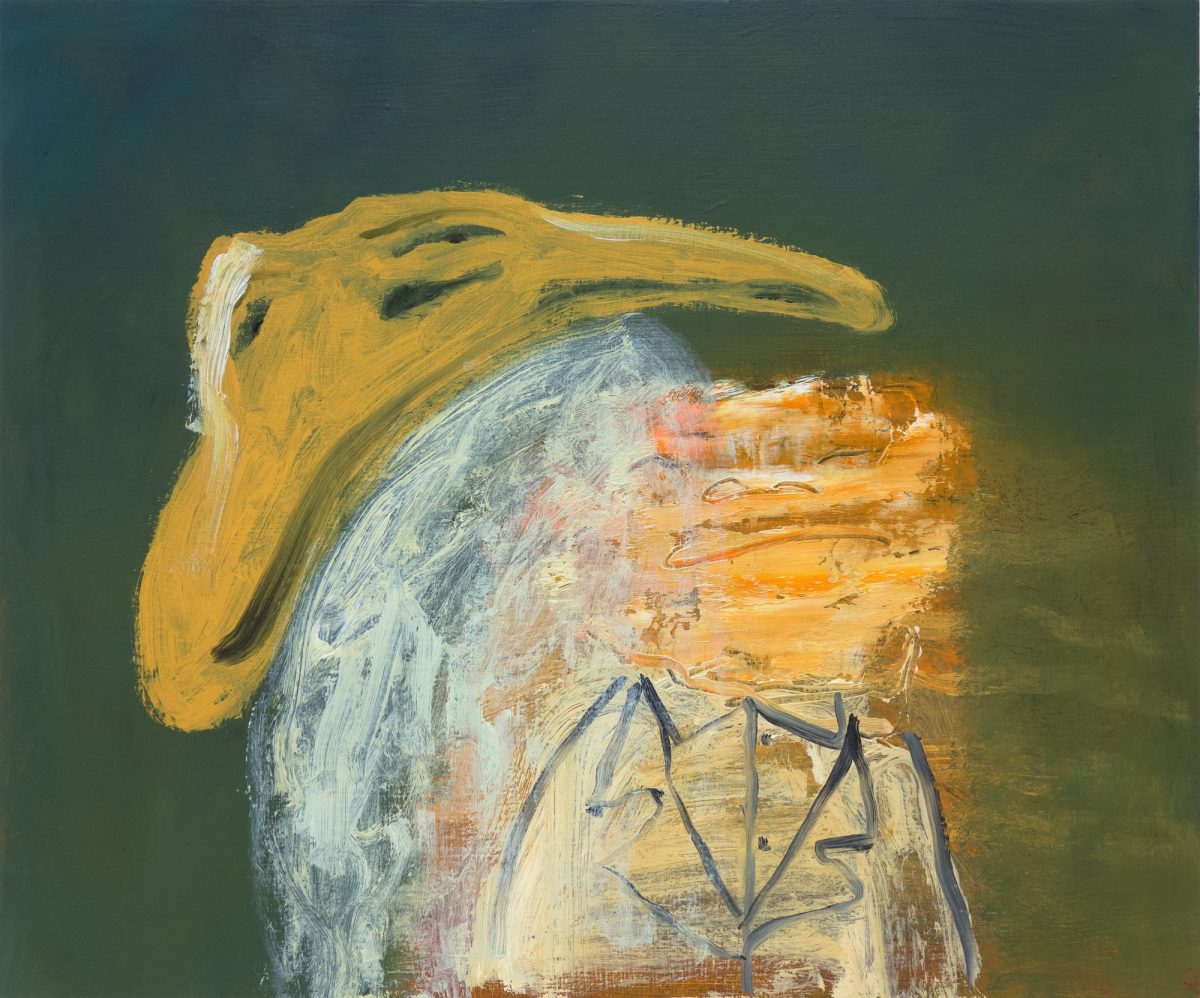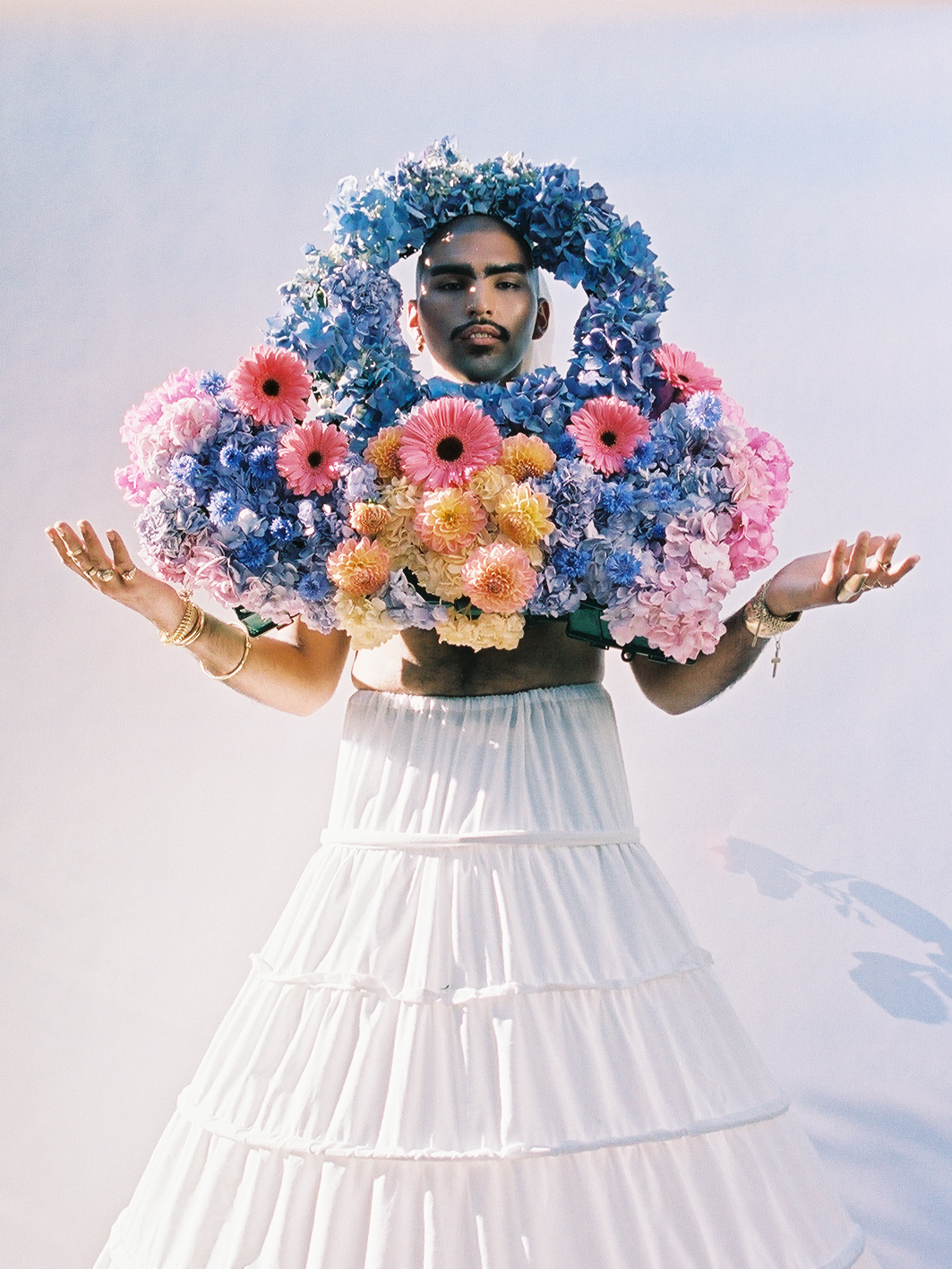
Devyn Galindo
Rising photography star Devyn Galindo moves easily between documenting the lives of their friends from the Chicanx scene in eastern Los Angeles (the city’s historic Mexican-American heartland) and shoots for titles such as Vogue and Harper’s Bazaar. Galindo’s latest series, The Van Dykes Project, sees them drive around America in a VW camper van to photograph LGBTQ communities from across the country. “There are horrible injustices happening all around us in these communities,” Galindo stated earlier this year, “and I feel a deep responsibility to create images that make people feel seen and powerful.” Closer to home, they recently shot a series of arresting portraits of fellow artist and actor Elíseo Equihua in their own backyard. Inspired in part by images of Frida Kahlo, the images delicately conjure the combined strength of both feminine and masculine energy, as Galindo explains, to forge a future that goes beyond gender. (Louise Benson)
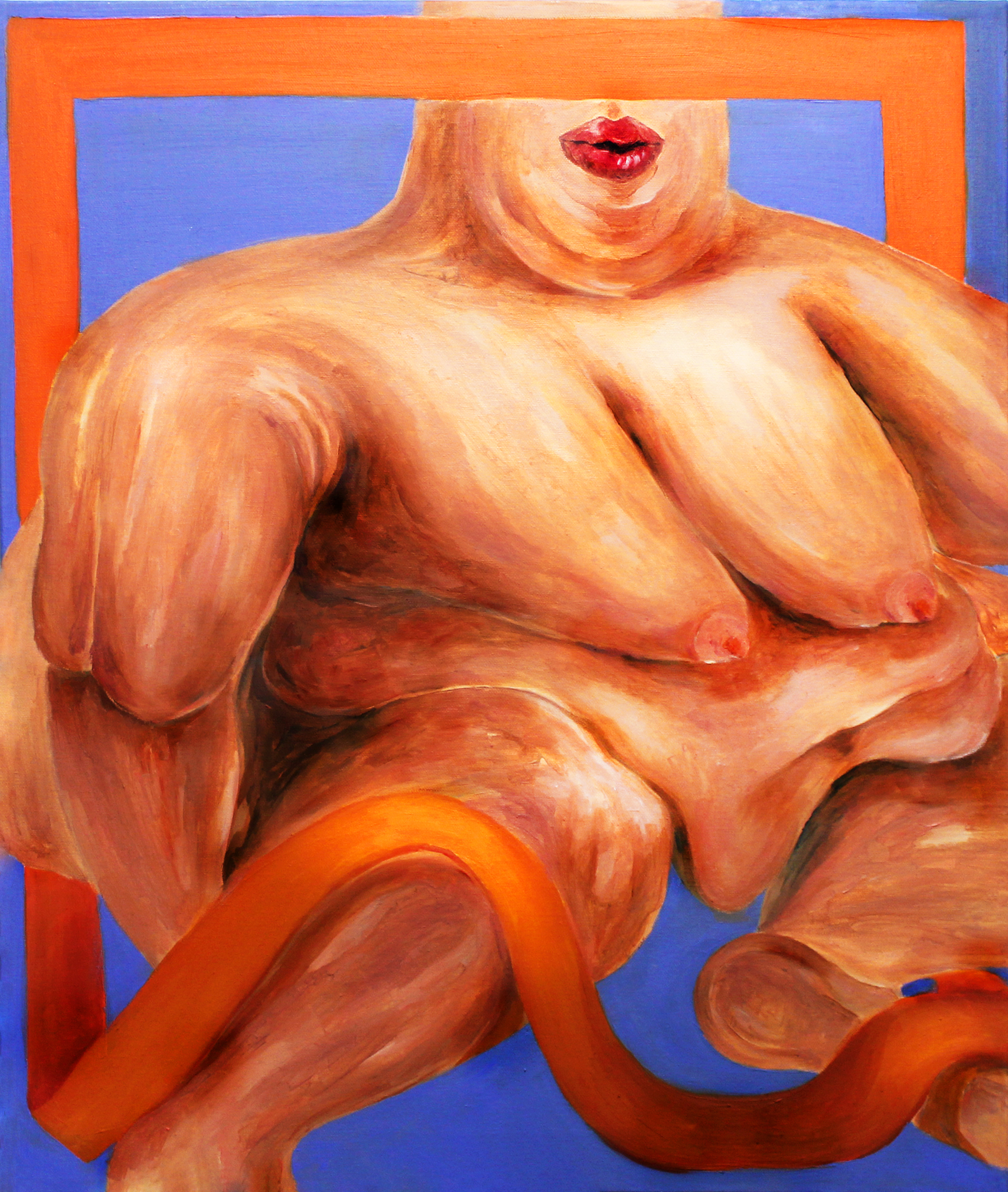
WooSun Choi
Currently completing an MFA at Nottingham Trent, WooSun Choi is still under the radar, but you heard it here first: whether she’s sculpting, performing or painting (and she’s prolific at all three), her work is bursting with personality. Exploring the discordant rhythms of our existence, Choi’s creates characters such as her ‘fatty lumps’ or ‘melting and melted masses’ whose deformed figures seem in harmony with the inner turmoil of the modern-day experience. Elsewhere she invites you to take a bite of her sea noodles emerging from the canvas. It’s a bit sci-fi, a bit graphic and lots of fun. (Charlotte Jansen)
- Tenki Hiramatsu, Body double, 2021 (left); 4 A.M., 2021 (right)
Tenki Hiramatsu
There is something jovial about Tenki Hiramatsu’s work. The Japanese artist, who lives and works in Karlsruhe, Germany, paints mysterious works that seems to have one foot in the legacy of German Expressionism, and the other in the cartoon world—is that Snoopy, the Cat in the Hat, or a strange anthropomorphic cake slice peeking from the canvas? While uncanny, his paintings escape any inherent sense of the sinister, and instead invite inquisitive minds and multiple questions. In his latest exhibition at Claas Reiss in London, titled Good Con Man, he considers the ultimate con to be based on an “ability to construct a convincing illusion without being demystified.” It seems to be something he excels at. (Holly Black)

Stephanie Temma Hier
Combining ceramic sculpture and oil painting, Stephanie Temma Hier’s work is nothing if not playful. The Canadian artist searches for imagery on the internet, and often paints fruit, human portraits and animals on canvases that are framed by 3D ceramic forms. In one work, an inky blue painting of a telephone is surrounded by blackish blue ceramic bananas, humorously echoing the handset’s shape. In another, a boy wearing a bright orange sweater and drinking from a water fountain is encircled by vivid ceramic carrots. Hier is currently included in a group show at Kasmin in New York, which brings together artists who were either born in Canada or have spent a significant amount of time working in the country. (Emily Steer)

Nour Jaouda
A recent graduate of the RCA and the Ruskin School of Art, Libyan artist Nour Jaouda is set to make waves with her distinctive deconstructed sculptures, through which she seeks to convey the precarious nature of cultural identity and mobility. Melding metalwork with painting, textiles and found objects, stories emerge from discreet patterns. Cutouts reveal shadowy figures, while imprints upon cloth speak of buried histories. Jaouda cuts, dyes and shreds loose fabrics, which frequently hover somewhere between stitching and tearing, each overlapping line hinting at the vulnerability of unstable borders and shifting margins. Based between London and Cairo, the artist offers an unspoken reflection of her own migration, of alienation and belonging, familiarity and strangeness. (Louise Benson)
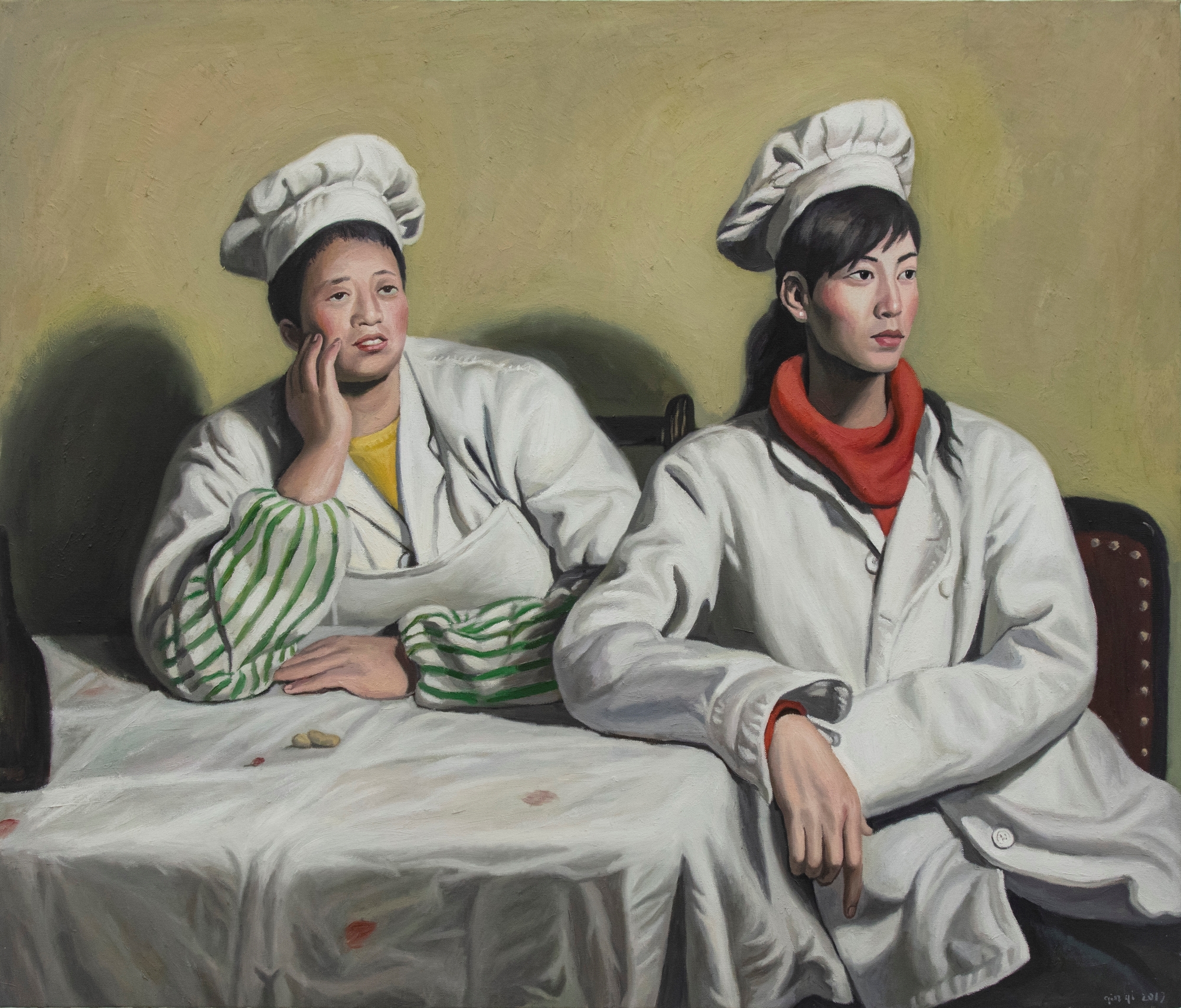
Qin Qi
Shenyang-based painter and educator Qin Qi’s works are strangely twisted, and it’s not just the surrealist dimensions the artist employs to dramatic effect. A recent painting (on show at Massimodecarlo’s London gallery, part of a three-part, three-city foray into portraiture at their galleries) is titled Ants and Sugar Cubes and leaves a mystifying trail of images for the viewer to decode: busts, chefs’ outfits, the eponymous ants and sugar cubes, a croissant… what does it all mean? It offers a kind of visual Cluedo that’s unsettling but leaves the viewer desperate to crack it, which is exactly what Qin Qi intends. (Charlotte Jansen)
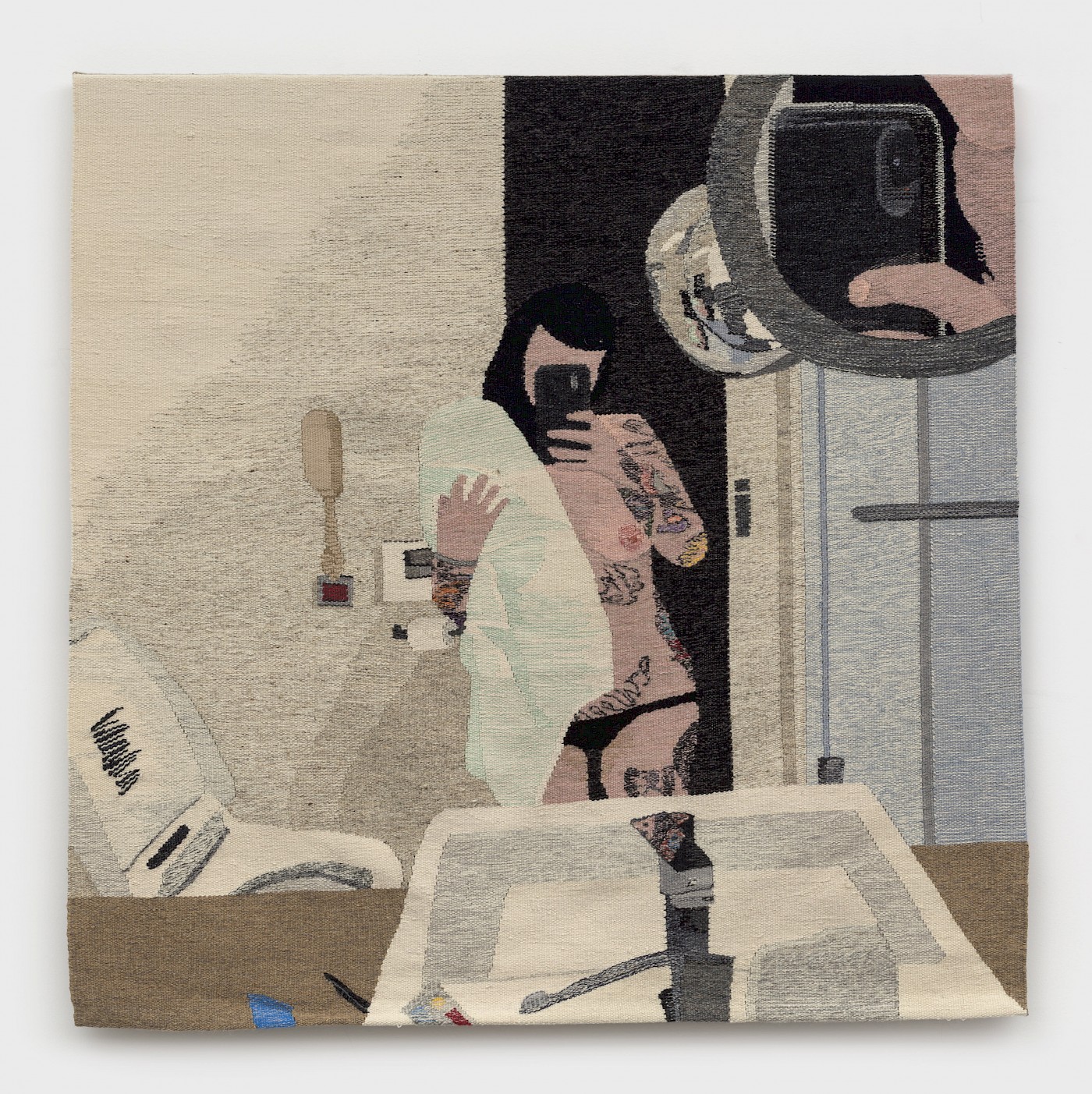
Erin M Riley
The American artist’s profile has been on the rise in the last year. Erin M Riley had a recent solo show at PPOW in New York, and she is included in Timothy Taylor’s IRL, a group show that explores how social life and sensory experience is impacted by the digital realm. Riley’s works are a complex blend of online and offline experiences. She often depicts her subjects engaging with a phone or computer screen, yet she uses an incredibly hands-on process by creating all of her works using tapestry. Her materials are sourced from shuttered fabric mills around the US, and she uses imagery taken by herself or found online. Her works are raw and emotional, touching on sexuality, self-worth, violence and trauma, from a deeply personal angle. “I’ve learned my dark places are cyclical like cicadas,” she says. “Growing in the dirt to emerge every decade. I photograph the bad moments because they do eventually fade.” (Emily Steer)
All images courtesy the artists
